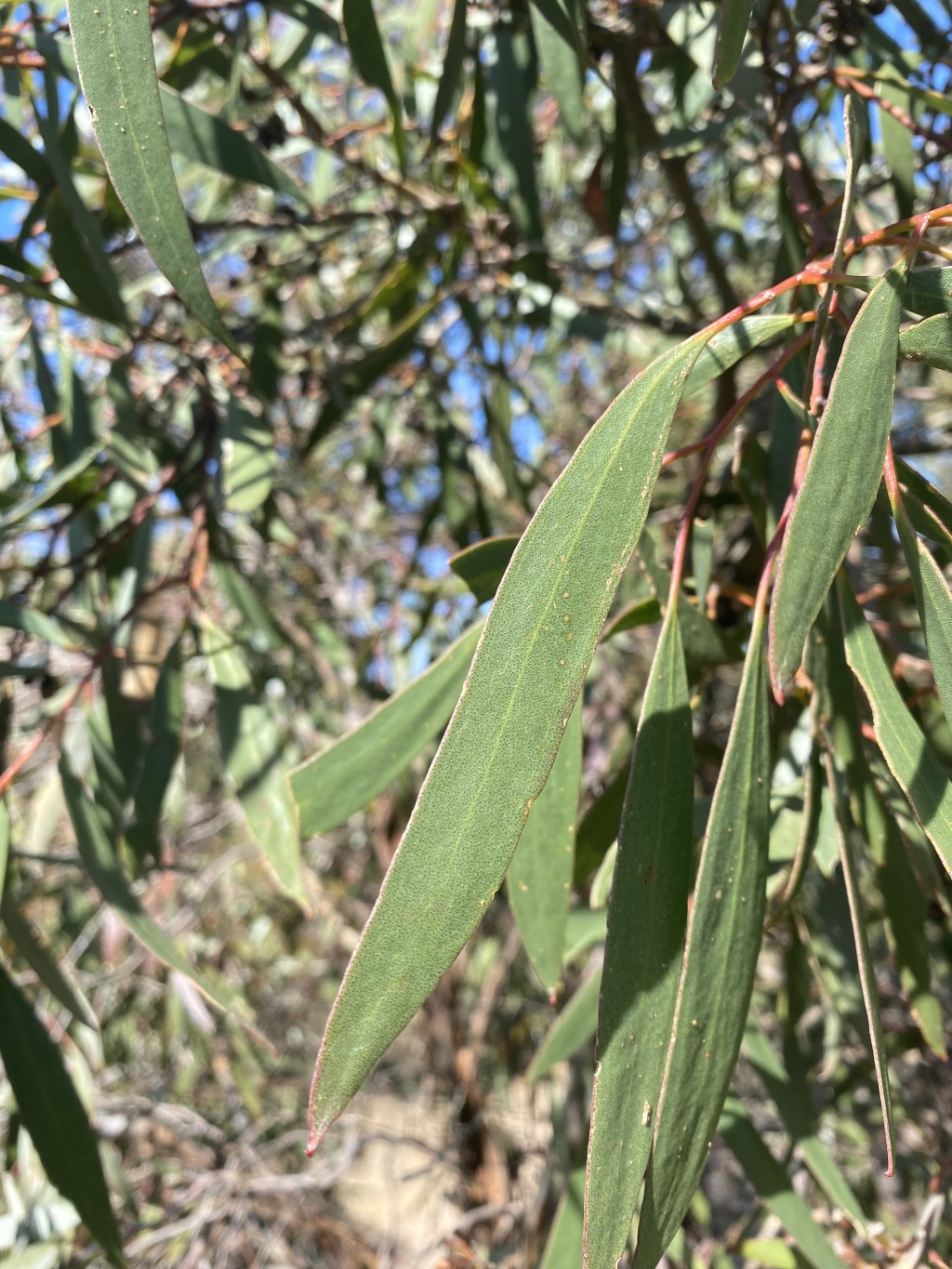Eucalyptus froggattii
Blakely Kamarooka MalleeMallee or small tree to 9 m tall; bark rough and crumbly over whole trunk, blackish, box-type, then shedding above in ribbons leaving grey, pale brown and bronze smooth bark. Juvenile leaves petiolate, opposite for few pairs then alternate, elliptic to broadly lanceolate, to 10 cm long, 4.5 cm wide, glossy, green; adult leaves petiolate, lanceolate, 9–12 cm long, 1.3–2 cm wide, concolorous, glossy, green, conspicuously apiculate; intramarginal vein remote from edge; reticulation sparse with few more or less parallel side veins obscured by very numerous oil glands. Inflorescence mostly terminal panicles; peduncles flattened, to 1.5 cm long, 7–11 flowered; buds pedicellate, clavate in outline, square in cross-section, to 1 cm long, 0.5 cm diam., no scar; operculum pyramidal; stamens irregularly flexed; anthers adnate, globoid; ovules in 4 vertical rows; flowers cream. Fruit pedicellate, cupular in outline, square in section, to 1 cm long, 0.8 cm diam.; disc descending; valves 4 or 5, below rim; seed pale brown, irregularly ovoid to cuboid, sometimes slightly flattened, surface shallowly reticulate, hilum ventral. Flowers Sep.–Apr.
MuM, Wim, VRiv, Gold, GGr. Endemic to Victoria. Disjunctly distributed in mallee scrubs and woodlands north-west of Nhill, south-west of Horsham, near Charlton and north of Bendigo. .
The only species in Victoria with highly glandular leaves showing no veinlets. It is easily identified by its dark rough and bronze smooth bark, glossy crown and angled buds and fruits.
Brooker, M.I.H.; Slee, A.V. (1996). Eucalyptus. In: Walsh, N.G.; Entwisle, T.J., Flora of Victoria Vol. 3, Dicotyledons Winteraceae to Myrtaceae, pp. 946–1009. Inkata Press, Melbourne.
 Spinning
Spinning
